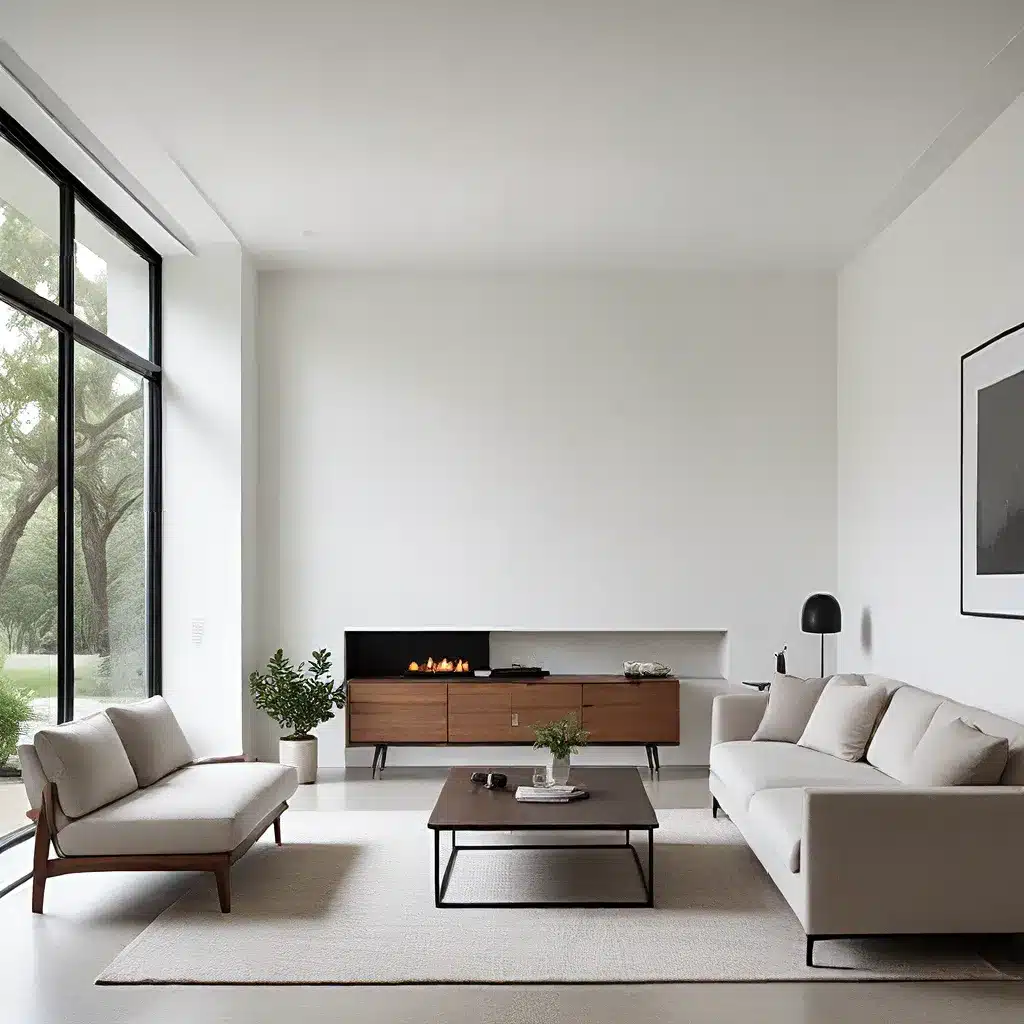
In a world saturated with visual noise and material excess, the allure of minimalist design shines through like a beacon of serenity. This design philosophy, characterized by simplicity, functionality, and clean lines, has gained immense popularity in recent years, allowing homeowners and design enthusiasts alike to create spaces that exude a sense of calm and harmony.
Defining Minimalist Design: Stripping Away the Excess
At its core, minimalism is about embracing the idea that “less is more.” It is a conscious effort to remove the overload and focus on what truly matters. By stripping away unnecessary elements and decorations, minimalist design allows the true beauty of each design component to shine through, resulting in visually striking, highly functional, and emotionally soothing spaces.
Embracing minimalism in your interior design begins with a critical evaluation of your surroundings. It’s about decluttering your space and removing any items that do not serve a purpose or bring you joy. The goal is to create a clean, uncluttered environment that fosters clarity and tranquility, allowing you to truly appreciate the essentials.
Hallmarks of Minimalist Design
Clean Lines and Geometric Forms
One of the defining characteristics of minimalist design is the prominence of clean lines, geometric shapes, and smooth surfaces. Straight edges, crisp corners, and a lack of ornate details create a sense of order and visual harmony, allowing the eye to focus on the purity and elegance of each design element.
Whether in the architectural features, furniture, or overall decor, minimalist design emphasizes simplicity and clarity. By incorporating clean lines, you can establish a calming atmosphere and a clear visual hierarchy, guiding the viewer’s attention to the essential components of the space.
Neutral Color Palettes
Color plays a crucial role in minimalist design, with neutral palettes often taking center stage. Shades of white, gray, beige, and earth tones provide a clean and discreet backdrop, allowing the furniture, architectural features, and other design elements to take the spotlight.
The use of neutral colors in minimalist spaces creates a sense of serenity and timelessness, evoking a feeling of tranquility and balance. Accents of color can be introduced sparingly to add visual interest and create focal points within the space, but the overall emphasis remains on the harmonious integration of muted hues.
Functional Simplicity
Minimalism is not just an aesthetic; it’s a philosophy that extends to the very functionality of a space. In a minimalist interior, every item and element serves a specific purpose, contributing to the overall efficiency and practicality of the design.
Furniture and decor are selected for their clean, streamlined silhouettes and their ability to enhance daily activities. Storage solutions are cleverly integrated to keep the space organized and clutter-free, ensuring that every inch of the environment is utilized to its fullest potential.
The Benefits of Minimalist Design
Enhanced Productivity and Mindfulness
Embracing minimalism in your interior design can have a profound impact on your overall well-being and productivity. By creating a clear, focused environment and reducing visual distractions, minimalist spaces allow your mind to stay centered and engaged, enhancing your ability to concentrate on tasks and goals.
Moreover, the minimalist lifestyle encourages a more mindful approach to our possessions. Rather than accumulating countless items, we learn to cherish and appreciate what we have, fostering a deeper connection to our environment and a greater sense of gratitude for the things that truly matter.
Harmony and Balance
The essence of minimalism lies in its ability to create a harmonious and balanced living environment. By prioritizing simplicity, functionality, and clean lines, minimalist design promotes a sense of calm and serenity that permeates every aspect of the space.
The uncluttered aesthetic and the thoughtful integration of design elements cultivate a sense of order and tranquility, allowing the mind to rest and recharge. This harmonious interplay of form and function creates a sanctuary where you can truly unwind and find respite from the demands of everyday life.
Embracing Minimalism in Your Home
Incorporating minimalist design principles into your home can be a transformative experience, elevating your living environment and fostering a deeper sense of well-being. Whether you opt for a pure minimalist aesthetic or blend it with other design styles, the essence of minimalism will always bring a touch of beauty, harmony, and tranquility to your space.
Embrace the power of minimalism and embark on a journey towards a more intentional, functional, and visually appealing living space. By prioritizing simplicity, clean lines, and thoughtful design, you can create a sanctuary that reflects your values and nourishes your soul.
Conclusion
In a world that often encourages accumulation and excess, the minimalist design movement offers a refreshing alternative. By embracing clean lines, neutral color palettes, and functional simplicity, you can cultivate a living environment that promotes clarity, productivity, and a sense of mindfulness.
As you navigate the world of interior design, consider the power of minimalism and the profound impact it can have on your daily life. Surround yourself with only the essentials, and let the beauty of simplicity and uncluttered aesthetics transform your space into a sanctuary of serenity and harmony.

